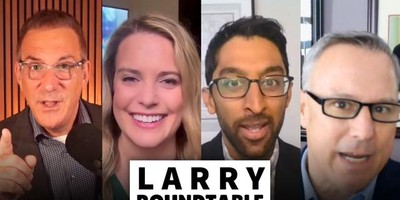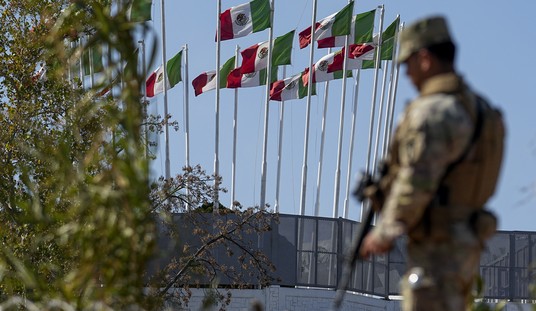We’ve already taken a look at the ways in which modern Keynesian economics and its nephew modern portfolio theory insulate finance from economics by failing to use the interest rate as a bridge between the two disciplines. But what makes matters even worse is that even if they learned the error of their ways and changed their models and recognized the centrality of the interest rate as a bridge between the world of economics and the world of finance, that would still not protect them from the fact that every major economy in the world is currently manipulating its interest rates for political purposes.
In other words, the fact that interest rates tell us the truth about ourselves is intolerable to the political class. They don’t want us to be told the truth. They want low interest rates to foster the illusion that inflation is low in order to create the perception that capital is abundant, and to enable their governments to borrow more than they should by subsidizing the interest rates through money creation; the latter necessary to muffle the alarm bells of rising default risk.
But if the interest rate is the basis on which all investments, or for that matter, all spending decisions are made, and the interest rates are being distorted by central banks, then that means that all valuation is plunged into chaos. That is exactly what is happening right now. Nobody knows how to value anything.
And the only way to fully remedy that would be for the central banks to return to honest money. Since there is very little chance of that in the short-term, then the only way for investors to remedy the situation is to determine what the interest rate would be if it were not intentionally being distorted. In other word we have to extract the lie from the interest rate in order to get it back to telling the truth. There is simply no other way to properly value any investment than to start by correcting this distortion.
One of the biggest problems in valuation is inflation. This may seem strange to you, since generally financial chatter ignores the inflation factor in valuation. The few who address it, misunderstand it, holding that monetary inflation is good for growth and therefore good for stocks. Even the few commentators who address inflation concerns properly focus almost exclusively on commodity valuation, especially gold.
Recommended
But monetary manipulation distorts EVERY investment, because every investment is priced in money. If money is a ubiquitous economic factor, then it follows that distortion of money value must necessarily distort everything in the economy. In Prices and Production, Hayek makes the point that you can have distortion effects from excess money creation even if you don’t have any price inflation at all! That’s because there are times when the production of goods and services grows faster than the production of new money. In this case prices will fall, even when money supply increases.
So, if the distortion effect does not show up in higher prices of goods and services, where does it show up? It shows up in artificially low bond rates. That’s because typically when the central bank inflates the money supply, the first thing it does with the new money is to buy bonds. Bond prices are pushed artificially high (which is just another way of saying that bond yields are pushed artificially low.)
As we saw in previous articles, this ruins everything. The bond rate tells us the truth about ourselves when we are the ones setting it through our production, consumption, savings and investment. But when the central bank overrules all of that and forces rates above or below their natural level, the link between effort and yield is severed. Somebody gets free money at the expense of everyone else. This creates a false sense of boom for the first recipient of the cash and the rest of us still feel pretty good because the money has not yet circulated into causing general price inflation. At that point the bust is inevitable. If the Fed is currently distorting the economy this way, then a bust is inevitable.
You see, the forceful artificial downward bend in interest rates can’t last forever. Eventually even the most oblivious of us wakes up and realizes that easy money caused a bubble, not a boom, and then the rate must go up. And here is a very important corollary: just because stock prices are high, does not necessarily mean that there is no bubble. Bubbles occur when investment assets are far higher than they should be, which is not remotely the same thing as being far higher than they used to be. This state of affairs is usually related to easy money. In other words, a historically low stock market in an adverse economic policy environment temporarily propped up by easy money can still be a bubble. And just because the easy money has not yet shown up in the form of general price inflation doesn’t mean it never will.
If I’m to invest in an enterprise I need more than just to be compensated for waiting until later to consume, and to get a better return than the next most attractive investment of the same risk. I need to be protected from my own government’s monopoly on issuing fiat currency. If I invest at 5%, but the inflation rate is 6%, then I am really losing 1% per year in purchasing power. This may seem obvious to the typical Forbes.com reader, but it’s amazing how often I see financial advisors bragging about rates of return in nominal terms, ignoring the fact that once inflation is factored in, they’ve lost money for their clients. In an inflationary age it no longer means anything to look at a quarterly statement to see if there is a plus sign or a minus sign next to the return box. One has to do the mental math: nominal return minus inflation is real return.
Once one takes this into account, one can see that the old idea that low interest rates are better than high interest rates is a gross oversimplification. Are we talking about low real rates or low nominal rates? Are rates low because inflation is low, or are they low because growth is low? In my view the only genuinely bad interest rate is a manipulated one.
How can you know when the interest rate is distorted? How can you determine what the natural rate of interest should be, when every interest rate signal in the market is unnatural? How can you winnow away the chaff of Fed interventions to arrive at the kernel of truth about proper valuations? Why have so many good people, even some of our supply side friends, foundered on this point? We’ll take a stab at some answers in a future column. For now, you’ll just have to defer your gratification, in the hope of future yield.
Mr. Bowyer is the author of "The Free Market Capitalists Survival Guide," published by HarperCollins, and a columnist for Forbes.com. This article originally appeared at Forbes.
























Join the conversation as a VIP Member